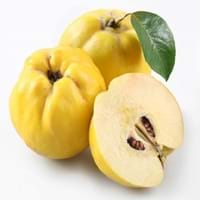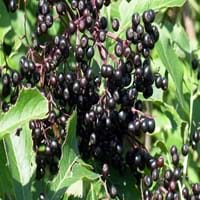Health Benefits
Cancer prevention, Cures gastro-intestinal troubles, Reduces nervous tension, Ulcer prevention
Cancer prevention, Heart care
General Benefits
Anti oxidant properties, Anti-inflammatory properties, Boosts immune system, Controls blood pressure, Digestive aid, Eye care, Helps in weight loss, Improves blood circulation, Maintains healthy cholesterol level
Anti oxidant properties, Anti-inflammatory properties, Boosts immune system, Controls blood sugar levels, Cures fever, Digestive aid, Eye care, Fights against infections, Flu treatment, Helps in weight loss, Maintains healthy cholesterol level
Skin Benefits
Anti-aging benefits, Reduces wrinkles
Anti-aging benefits, Skin rejuvenation
Hair Benefits
Regulates hair growth
Promotes longer and healthier hair
Allergy Symptoms
NA
Abdominal pains, Asthma, NA, Sneezing, Sore throat
Side Effects
Allergic reaction
Diarrhoea, Nausea, Vomiting
Lactating Women
Yes
Not Available
Best Time to Eat
As a snack in the late afternoon, Don't consume at night and before bed, Eat the fresh ones, avoid mixing with any other foods, don't eat after meal., Morning time (before lunch)
As a snack in the late afternoon, Don't consume at night and before bed, Eat the fresh ones, avoid mixing with any other foods, don't eat after meal., Morning time (before lunch)
Vitamin B5 (Pantothenic Acid)
Vitamin C (Ascorbic Acid)
Calories in Fresh Fruit with Peel
Calories in Fresh Fruit without Peel
Not Available
Not Available
Calories in Frozen Form
Not Available
Not Available
Calories in Canned Form
Not Available
Not Available
Varieties
Meech’s Prolific, Lusitanica, Champion and Vranja AGM
Adams, Black Beauty, Black Lace, Johns, Nova, Variegated and York
Color
Green, Yellow
Black, Red
Inside Color
White
Magenta
Origin
Iran, South-West Asia, Turkey
Europe
Soil Type
Loam, Well-drained
Sandy, Well-drained
Climatic Conditions
Warm
Warm to hot climate
Facts about
- Due to its strong & fruity aroma, brides consumed quince to ensure "perfumed lips".
- It is also called as ‘Pear of Cydonia’, being native to Caucasus and Iran.
- They call it as the ‘golden apple’ of Greek Mythology.
- According to a superstitious belief, the "elder tree" was supposed to ward off evil influence & give protection from witches.
- Branches from its tree are also used to make fujara, koncovka & other Slovakian flutes.
Top Producer
Turkey
United States of America
Other Countries
Algeria, Argentina, Azerbaijan, China, Iran, Morocco, Serbia, Spain, Uzbekistan
Colombia, India, Mexico
Top Importer
United States of America
Not Available
Top Exporter
Argentina
Not Available
Botanical Name
Cydonia oblonga
Sambucus nigra
Synonym
C. vulgaris
Not Available
Subkingdom
Tracheobionta
Tracheobionta
Division
Magnoliophyta
Magnoliophyta
Class
Magnoliopsida
Magnoliopsida
Subclass
Rosidae
Asteridae
Family
Rosaceae
Adoxaceae
Species
C. oblonga
S. nigra
Generic Group
Rose
Moschatel
Difference Between Quince and Elderberry
We might think that Quince and Elderberry are similar with respect to nutritional value and health benefits. But the nutrient content of both fruits is different. Quince and Elderberry Facts such as their taste, shape, color, and size are also distinct. The difference between Quince and Elderberry is explained here.
The amount of calories in 100 gm of fresh Quince and Elderberry with peel is 57.00 kcal and 73.00 kcal and the amount of calories without peel is Not Available and Not Available respectively. Thus, Quince and Elderberry belong to and category.These fruits might or might not differ with respect to their scientific classification. The order of Quince and Elderberry is Rosales and Dipsacales respectively. Quince belongs to Rosaceae family and Elderberry belongs to Adoxaceae family. Quince belongs to Cydonia genus of C. oblonga species and Elderberry belongs to Sambucus genus of S. nigra species. Beings plants, both fruits belong to Plantae Kingdom.









